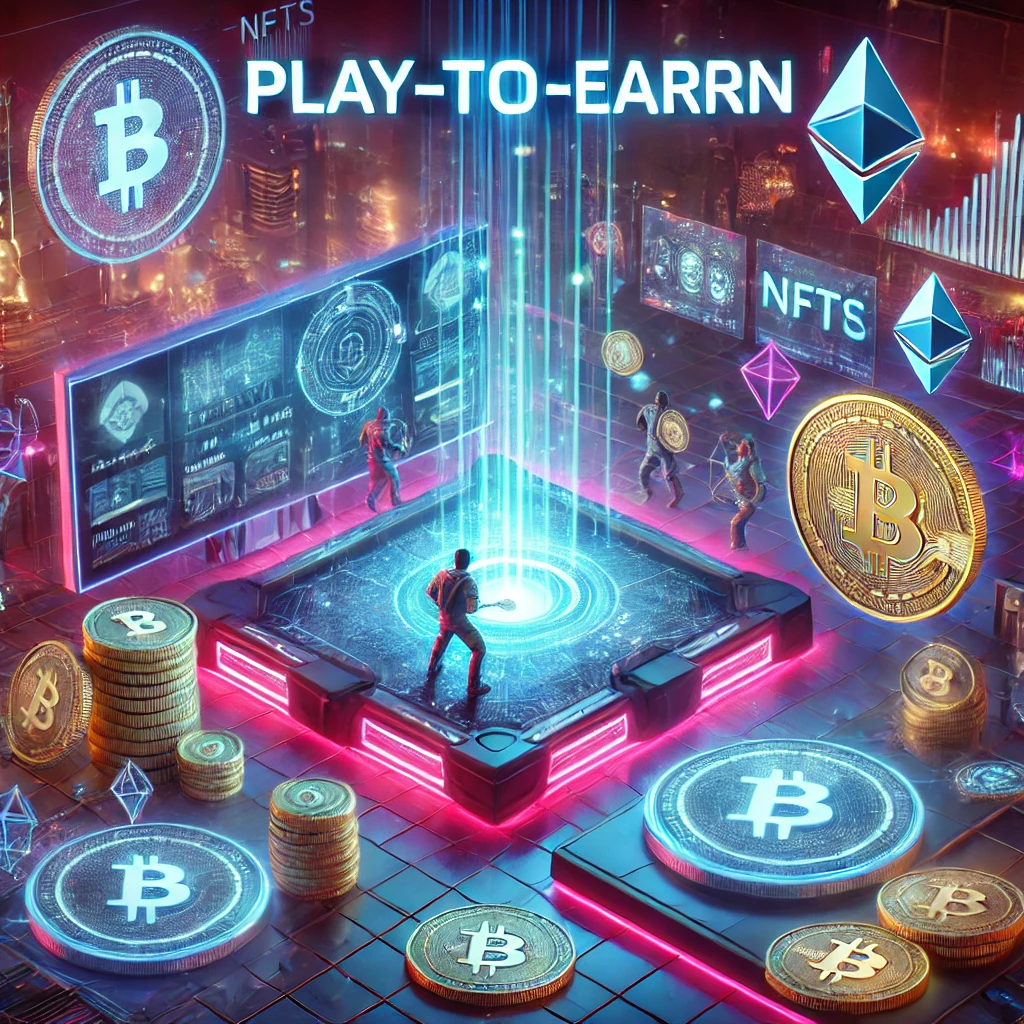Understanding the Play-to-Earn (P2E) Model
The Play-to-Earn (P2E) model has transformed gaming by allowing players to earn real-world rewards through blockchain technology. Unlike traditional games where assets remain locked within closed ecosystems, P2E games enable players to trade, sell, and monetize in-game items as digital assets.
By utilizing cryptocurrencies and NFTs, P2E games provide a decentralized approach to gaming economies. Players can earn tokens through battles, quests, or staking mechanisms, creating financial incentives beyond entertainment. This has led to a surge in blockchain gaming adoption, attracting both casual gamers and professional investors.
How P2E Games Generate Value
A successful Play-to-Earn economics model relies on sustainable value creation. Most P2E games incorporate a dual-token system, with one token serving as an in-game currency and another functioning as a governance token. This structure allows for staking, liquidity pools, and decentralized decision-making.
The demand for in-game assets, combined with the scarcity of NFTs, creates a dynamic economy driven by supply and demand. The more engaged the player base, the higher the transaction volume, boosting token value. However, maintaining long-term sustainability requires carefully designed reward mechanisms to prevent inflationary pressure.
The Role of NFTs in P2E Economies
Non-fungible tokens (NFTs) play a crucial role in P2E games by ensuring true ownership and scarcity. Unlike traditional games, where items are controlled by developers, blockchain-based NFTs grant players full control over their digital assets.
This allows players to trade or transfer NFTs across different gaming platforms, increasing their real-world utility. Games like Axie Infinity, The Sandbox, and Illuvium leverage NFTs to create thriving economies where players can buy, sell, and breed digital creatures or assets. The uniqueness of each NFT enhances value, contributing to an active marketplace.
Challenges in P2E Sustainability
While Play-to-Earn gaming has opened new opportunities, scalability and sustainability remain key challenges. Many early P2E models faced token inflation issues, where excessive rewards diluted value over time. Without proper burn mechanisms, staking incentives, and transaction taxes, P2E economies risk collapsing.
Additionally, high entry costs for some games have made P2E inaccessible to many players. Scholarship programs and lending models have emerged to address this, allowing investors to sponsor new players in exchange for profit-sharing agreements. These initiatives help sustain user growth while mitigating financial barriers.
Regulatory and Market Considerations
As Play-to-Earn gaming gains popularity, regulatory scrutiny is increasing. Some governments classify in-game tokens as securities, potentially leading to legal restrictions and compliance requirements. Countries like the Philippines and Brazil have already introduced taxation policies on gaming earnings.
Moreover, fluctuating cryptocurrency markets impact P2E game economies, making it essential for developers to build resilient financial models. By integrating stablecoin rewards, diversified revenue streams, and decentralized governance, P2E projects can remain sustainable despite market volatility.
The Future of Play-to-Earn Gaming
The next evolution of Play-to-Earn economics will focus on balancing profitability and gameplay quality. New models, such as Play-and-Earn (P&E), hybrid free-to-play models, and AI-driven dynamic economies, aim to improve sustainability while keeping gaming enjoyable.
As metaverse projects and blockchain gaming ecosystems continue to grow, P2E will play an essential role in shaping digital economies. With enhanced tokenomics, better scalability solutions, and stronger community involvement, Play-to-Earn gaming is set to revolutionize both gaming and finance.
Final Thoughts
The Play-to-Earn gaming model is redefining how players engage with virtual economies, offering new financial opportunities while introducing sustainability challenges. As blockchain gaming evolves, the industry must adapt reward mechanisms, regulatory compliance, and economic models to ensure long-term success.
For the latest insights on Play-to-Earn economics, stay updated on BitcoinMarket.ai, where we cover the latest trends in blockchain gaming.
🔗 Recommended Reads:
- The Future of Play-to-Earn Gaming
- How NFTs Are Transforming the Gaming Industry
- Regulatory Impact on Play-to-Earn Games
